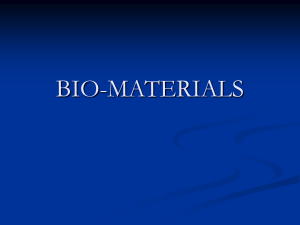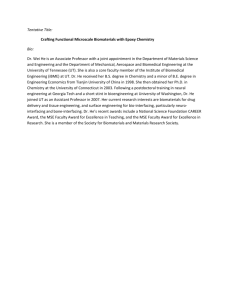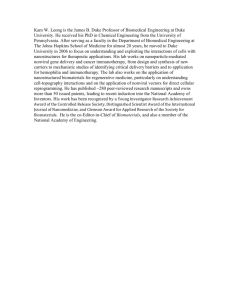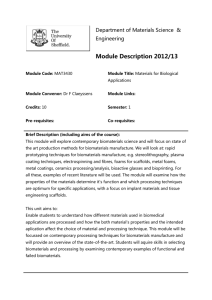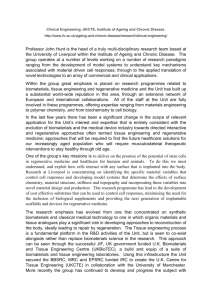Adapting Transport Systems: Towards a Low Carbon Future
advertisement
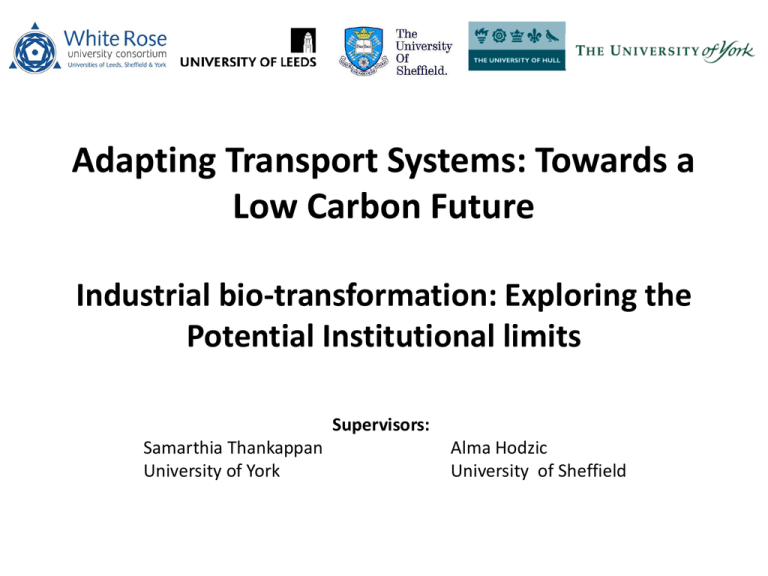
Adapting Transport Systems: Towards a Low Carbon Future Industrial bio-transformation: Exploring the Potential Institutional limits Supervisors: Samarthia Thankappan University of York Alma Hodzic University of Sheffield What are Bio-materials ? • Materials, chemicals and energy derived from renewable biological resources. • Bio-materials are considered an integral part of bio-energy strategies, due to their combined material and energy applications. Use of Bio-materials is increasing Natural fibrereinforced plastics Vegetable oil-based polyols & polyamides Bio-based polyesters & thermoplastic elastomers Soybean-based foams Ethanol ? Key Research Questions • How will biomaterials impact existing material producers? • How will markets develop around changing infrastructure? • What impacts do technology, regulation, society and geography have on material substitution occurring within the supply chains? • What is the extent of adaptations occurring in the sectors & what future changes are envisaged? Research Aim Study the process of transformation within and across the supply chains of the two sectors (Agriculture and Automobiles), with a key focus on the institutional constraints to the development of the technology Research Objectives • Identify the scale and growth rate of the substitution of traditional material by bio-materials. • Analysis of the impact of transformation towards material substitution occurring within and across the supply chain. • Examining the sustainability implications of the above at the local and national levels. • Formulating strategy concepts suitable to bio-materialism. Can biomaterials make a substantive contribution to greater sustainability? Methodology STAGE I • Comprehensive literature review • Mapping of current scale of bio-material supplies and material flows • Identifying pressure points in the supply chain by means of existing literature and semi-structured expert interviews/focus groups among scientists, industry executives and policy makers STAGE II • At the macro level supply chain interactions to track impacts of technical limits and the geographic flows of biomaterials will be undertaken • At the micro level, the incentives required to achieve a desired change within the various links in the supply chain will be explored. Interfaces with other Networks/organisations White Rose Network: Enabling supply chain adaptation to climate change and resource poor future (Validating the sustainability of bio-renewable replacements for petrochemical products) CNAP - Centre for Novel Agricultural Products Research
